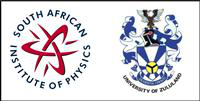Speaker
Apply to be<br> considered for a student <br> award (Yes / No)?
yes
Would you like to <br> submit a short paper <br> for the Conference <br> Proceedings (Yes / No)?
No
Level for award<br> (Hons, MSc, <br> PhD)?
PhD
Main supervisor (name and email)<br>and his / her institution
Prof. Andrew Forbes
aforbes@csir.co.za
Abstract content <br> (Max 300 words)
It is well-known how to control the spatial output from a laser, with most solutions to date involving customized intra-cavity elements in the form of apertures, diffractive optics and free-form mirrors. These optical elements require considerable design and fabrication effort and suffer from the further disadvantage of being immutably connected to the selection of a particular spatial mode. Consequently, most laser systems are designed for the ubiquitous Gaussian mode, whereas it is clear that there are many instances when a customised mode would be preferable. We overcome these limitations with the first digital laser, comprising an electrically addressed reflective phase-only spatial light modulator as an intra-cavity holographic mirror. The phase and amplitude of the holographic mirror may be controlled as simply as writing a new gray-scale image (computer generated hologram) to the device: on-demand laser modes. We show that we can digitally control the laser modes with ease, albeit with higher round-trip losses and thus requiring higher gain, and demonstrate the versatility of the technique by switching between several spatial modes in an otherwise standard solid-state laser resonator.

